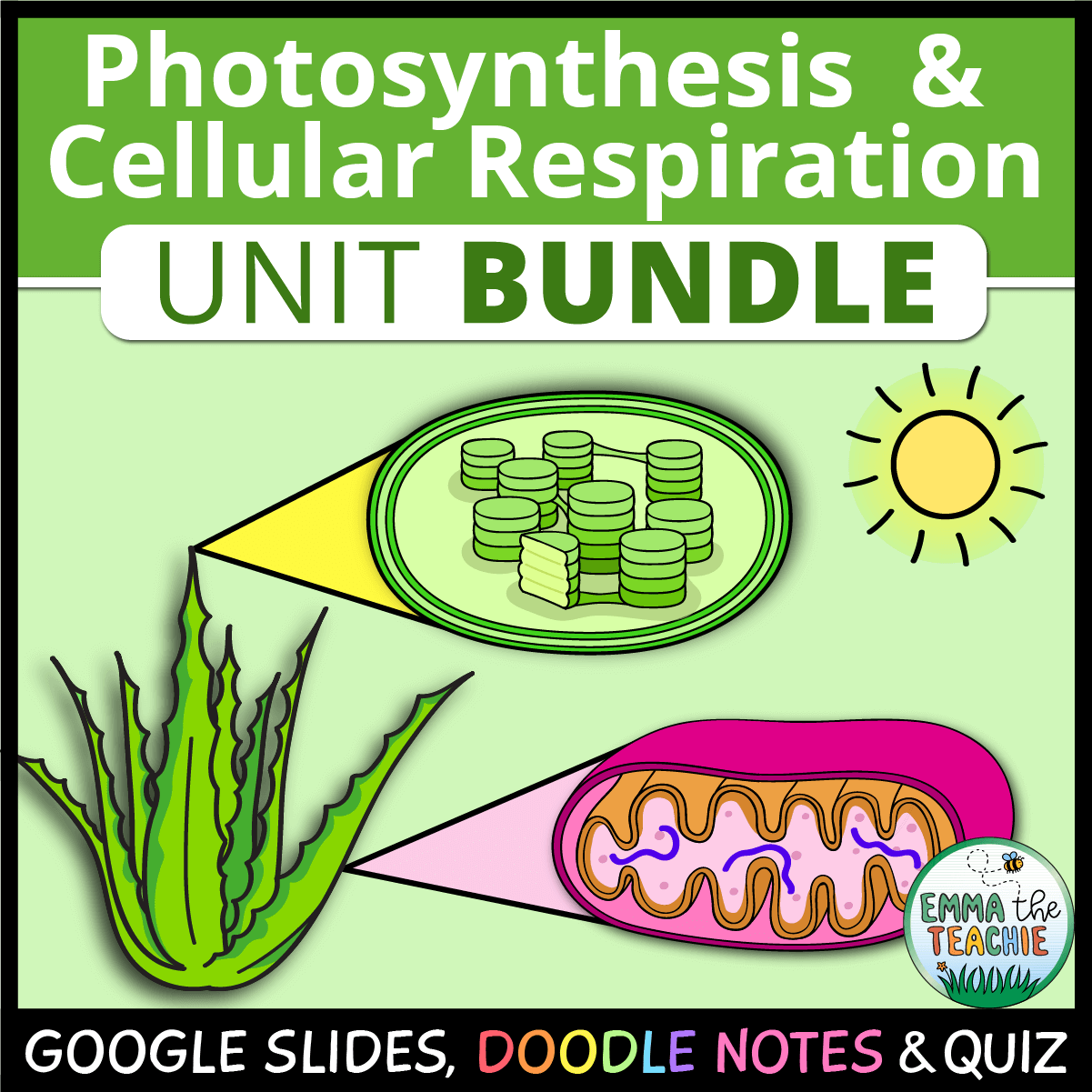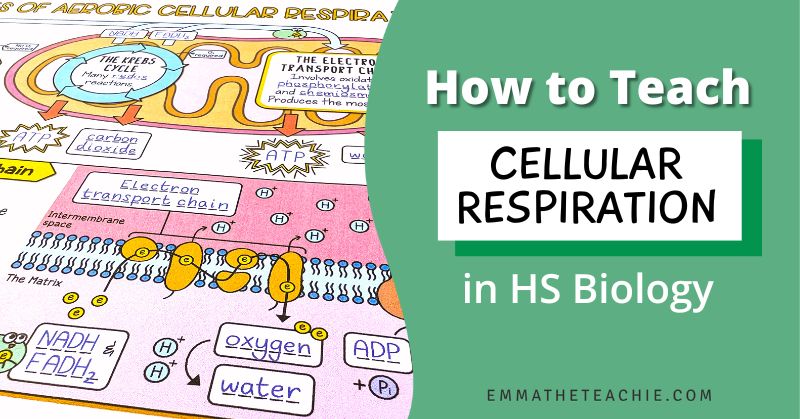
How to Teach Cellular Respiration in High School Biology
It’s that time of year…
I’ll say it so no one else has to…
Teaching cell respiration is one of the hardest units of the school year, and it can be my least favorite to teach.
Regardless, it has to be taught, and over the years I have found some strategies on how to teach cellular respiration that worked for me.
I hope you find them helpful for your own cellular respiration lesson!
1 – Check Your Standards

Before diving into the lesson, it is crucial to review your curriculum standards and learning objectives. Familiarize yourself with the specific topics and concepts related to cellular respiration that you need to cover.
It’s important to realize that YOU DON’T NEED TO COVER EVERYTHING!
It is so easy to go into an incredibly high level of detail, such as the specific enzymes and coenzymes used at each stage of the Krebs Cycle, but even in the AP Biology exam, this is not required.
If it’s not required in the AP Biology exam, you can be sure that it is not included in the state standards for college prep biology courses!
Next, take the time to break down the standards into smaller learning objectives. This will help you structure your lessons effectively and ensure that you provide comprehensive coverage of the subject matter.
Consider the different aspects of cellular respiration:
- the processes involved (glycolysis, Krebs cycle, and electron transport chain)
- the role of enzymes
- the importance of oxygen in aerobic respiration
By clearly understanding the standards and learning objectives, you can guide your teaching and create a roadmap for your students’ learning journey.
2 – Address misconceptions

Students often bring misconceptions to the table when learning about cellular respiration.
Some common misconceptions:
- cellular respiration solely occurs in the lungs
- cellular respiration only happens during physical activity
- plants don’t respire – only animals conduct cellular respiration
- cellular respiration is the same process as breathing
To address these misconceptions, I like to start the unit by conducting a pre-quiz or engaging in a formative class discussion.
By doing so, students share their existing knowledge and beliefs about cellular respiration, which will allow you to identify and address any misconceptions right from the start.
Take the time to address these misconceptions directly, providing clear explanations and examples to clarify the correct understanding.
Another way I like to address misconceptions is by having an activity centered around claims, evidence, and reasoning.
For instance, if students have a misconception that only animals use cellular respiration, we can watch a video about cellular respiration in plants and students will need to use CER to debunk that myth.
We could also have students complete a Venn diagram between cell respiration in animals versus cell respiration in plants.
3 – Use Active Learning Strategies
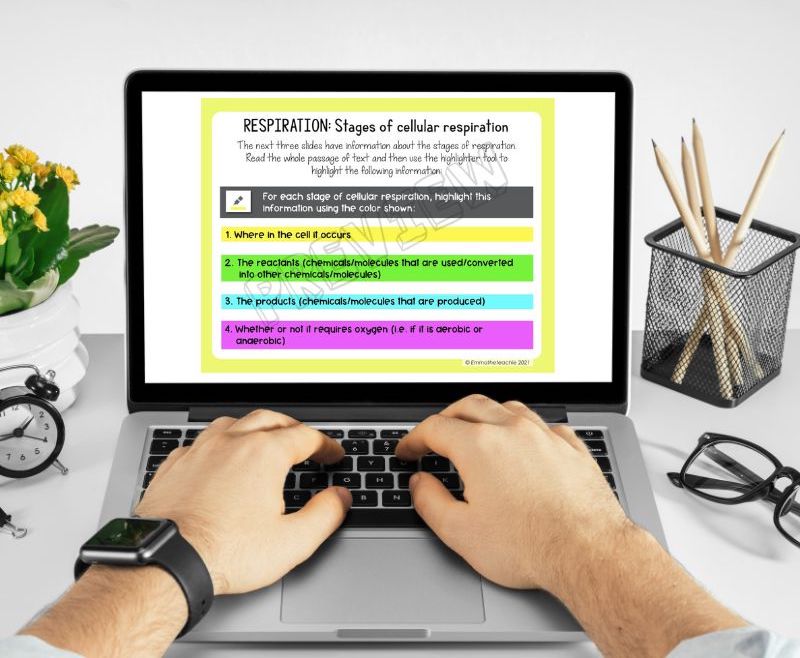
The terms and diagrams associated with cell respiration can be SCARY.
As a result, students can easily switch off in a lecture.
To enhance student engagement and understanding, incorporate active learning strategies into your lessons. Passive learning through lectures and textbook reading can be less effective when teaching cellular respiration.
Here are some strategies I have found to be highly engaging:
- Interactive Google Slides – Digital activities will help students visualize and manipulate cellular respiration processes. These tools can help make abstract concepts more tangible and memorable.
I have created my own set of Cell Respiration Google Slides activities, which can be found here. Within these slides, there are descriptions of each stage of cellular respiration. Students also have to highlight important information in different colors. This makes them actually process what they’re reading.
Students are also engaged in labeling diagrams, YouTube video links, vocabulary matching, and so much more!
- Hands-On Experiments: Conduct experiments that demonstrate cellular respiration, such as anaerobic respiration in yeast.
By actively participating in experiments, students can observe and experience the processes firsthand, reinforcing their understanding.
These experiments could involve yeast, germinating seeds, or even simple respirometers.
One of the most engaging laboratory activities I do is yeast fermentation.
In that particular lab, students experiment with different amounts of yeast and water in a bag. Once reacted, students use breathalyzers to determine the “blood alcohol content” inside of the bag. I have honestly never seen my students so interested in a lab.
4 – Assess Understanding
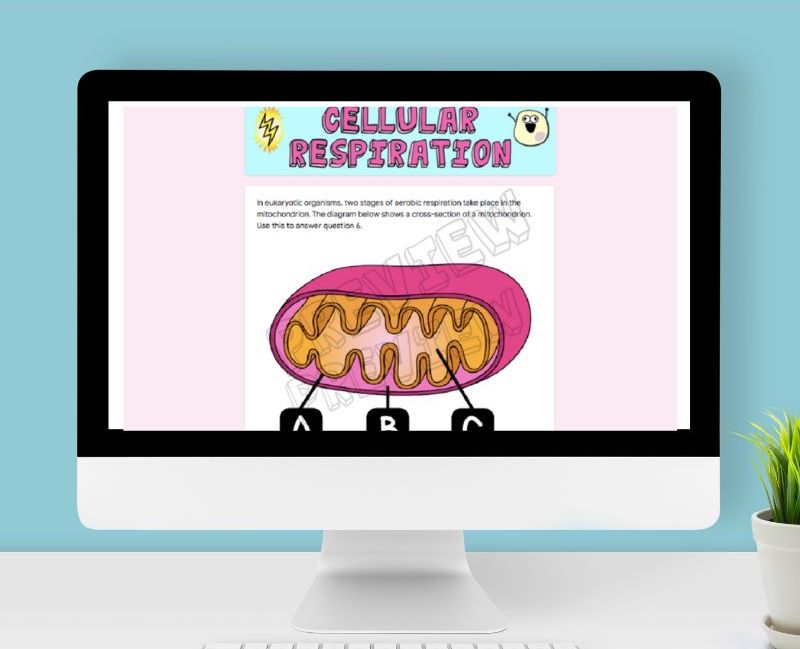
Do this frequently!
If we wait until we have taught every stage of cellular respiration, it is likely some students will have gotten stuck at the first stage of glycolysis!
There are so many ways we can go about assessing cell respiration. I like to use mini-whiteboards to get a quick feel for what students have understood. I don’t know about your students, but my students love using dry erase markers. I don’t understand, but I’ll take it!
A game of thumbs up or thumbs down is also a quick assessment. For this, all you do is ask your students a question about cell respiration with 2 options for answers and students put thumbs up for the first option and thumbs down for the second choice.
For example, you can survey students with the following prompt, “Cellular respiration happens in all living organisms. True (thumbs up) or false (thumbs down)?” This is a really quick way of seeing whole class answers at a glance.
Lastly, Google Forms Quizzes are a great assessment tool to use. I like to use multiple choice questions to collect data on the toughest questions. These are also great because students (and teachers) get immediate feedback.
WIN-WIN!
I have included a Google Forms Quiz in my cell respiration activities.
6 – Review, Review, Review
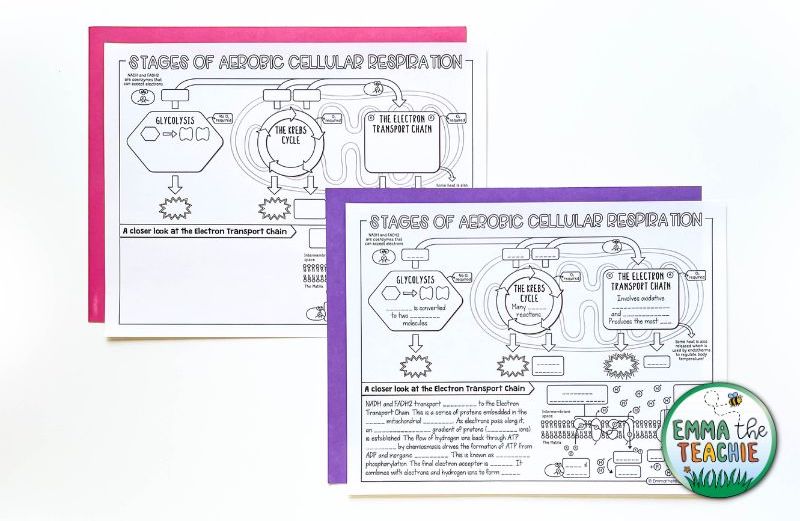
Regular review sessions are crucial to reinforce learning and help students really learn information. By revisiting key concepts and processes, you can ensure that students have a solid foundation in cellular respiration.
Simply put – the more students see the content, the less scary it becomes!
Here are some review strategies I use to help students review cell respiration:
Review with Doodle Notes
If you need a reminder or are new here, check out this blog post to see how I use Doodle Notes in the classroom.
Truthfully, using Doodle Notes may be one of my favorite techniques on how to I teach cell respiration to my students and review the concepts. In my opinion, Doodle Notes hit the trifecta when it comes to student review and understanding: visuals, colors, and text.
I have created my own set of Doodle notes about cell respiration:
Review with Interactive Games
Students (at least mine) love to be competitive and to play games.
To meet students where they are, I love to incorporate review games, such as Kahoot or Quizlet, to make the review process enjoyable and interactive. Read more about review games here.
This gamified approach increases engagement and helps reinforce learning.
These platforms are also great because you create the questions, which will give students a glimpse of what they should be able to answer on the classroom test or standardized test.
I will usually play this once in the classroom, as a live session. Then, I will post the shareable link to our Learning Management System, which is Google Classroom. By posting it, students can play the review more during their study time.
Teaching Cellular Respiration Doesn’t Have to be Daunting
Although this topic looks super complicated at a glance, once it is broken down into chunks, it’s actually quite interesting!
I hope you were able to find some useful ideas for how to teach cellular respiration.
If you do want to save some time (or A LOT of time, because these resources took hours to make!) then you can grab my ready to use bundle here:
I hope you have a wonderful day,
P.S. If you are also teaching Photosynthesis, be sure to check out my blog post with 4 Photosynthesis Activities!







